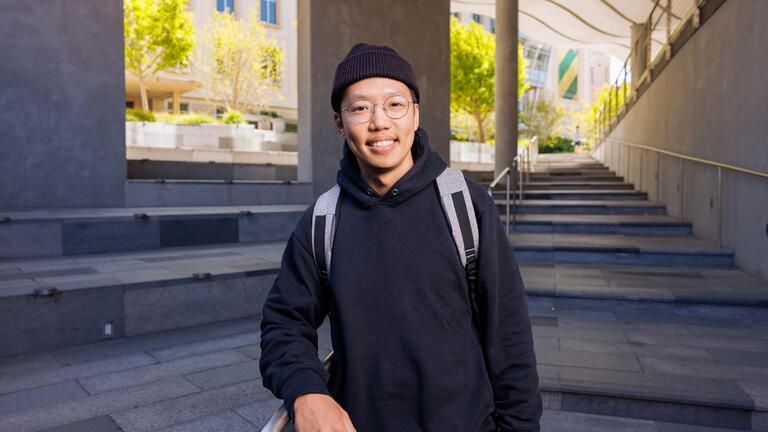
Master's Project
Students are given the opportunity to work on real-world projects with tech companies in the Bay Area and Silicon Valley, or with an academic organization on a research project.
The master's project is similar to an internship, but with the added bonus of academic guidance and access to the department’s resources. It’s a great way for students to apply classroom knowledge in a practical setting, and to make contacts in the industry as graduation nears.
At the beginning of the fall semester, potential sponsors pitch projects. Students form teams and begin the software development process. Guided by both faculty and industry sponsors, students work on their master's project 12-20 hours a week for 15 weeks. Students often express how much they learn in this intense course, and some obtain jobs with the company they work with or from contacts they make. For example, our students have been hired as engineers following their projects with SnapLogic.
Our Projects
-
Students have worked on several projects with SnapLogic, an Integration Platform as a Service (iPaaS) company that enables quick development of sophisticated data and application pipelines using a visual drag and drop interface. For one project, students developed a new feature within SnapLogic that allows pipelines to become interactive web user interfaces. On another project, students developed a prototype of a SnapLogic Persistent Event Streaming service that extends the existing architecture by providing a native streaming service.
-
This project's goals are to transform pathology laboratories by integrating advanced AI-driven technologies, managing the end-to-end patient journey within a secure and compliant cloud-based ecosystem, and serving over 600 laboratories and processing more than 2 million patient records annually. The primary motivations include alleviating medical workloads by automating repetitive tasks, enhancing lab efficiency through improved accuracy and streamlined operations, and providing diagnostic solutions by offering personalized lifestyle recommendations and actionable insights for patients. By achieving these goals, Cloud Pathology AI aims to optimize the workflow in pathology labs and significantly improve patient care and outcomes.
-
Students created Sweeply, a Slackbot that helps organize very large channel lists within an organization’s Slack environment. Sweeply is designed to put the user’s channel list on "autopilot". By providing and implementing a set of rules and criteria for how users joins and leaves channels, Sweeply automates the process.
-
Students address reducing data center energy consumption by architecting an energy-aware data center based on the logic that not all jobs are equally important or need to be run instantly in parallel in a data center. Students built a controller to manage workloads within an energy budget by consolidating workloads on fewer machines, dropping non-essential jobs, dropping duplicates, and migrating workloads across data centers. Students also use Kubernetes, a technology that is lighter weight than a virtual machine while also providing greater bin packing even as it shrinks an application to ensure successful deployments.
-
The "Doctor Right" system uses machine learning to recommend cost-effective, high-quality doctors tailored to patient needs. It employs two models: the Patient Model clusters patients based on features like demographics and diagnoses, while the Doctor Model predicts claim amounts using doctor experience, specialties, and treatment outcomes. Doctors are ranked based on predicted costs and cluster-specific experience to ensure effective recommendations. Utilizing an XGBoost classifier, the system achieves an F1 score of 0.66, reflecting a performance capable of driving meaningful changes and informed recommendations while leaving room for optimization. Future improvements could include incorporating more diverse patient and doctor attributes and refining predictions for even more personalized healthcare recommendations.
-
Myrror is the future of IoT products – a smart mirror that's a beautiful piece of furniture. It provides a digital dashboard that can show you the time, your calendar, YouTube, and act as a central point for IoT products like Ring video camera, Alexa, Google Home, Nest Temperature, and more. What once existed as a niche DIY engineering product is now accessible to everyone. To personalize and interact with your mirror, students created an intuitive React-Native mobile app that allows the non-technical user to manage everything from the face of the mirror – positioning items, installing new modules, and pushing remote updates with new features.
How Can Your Organization Participate?
Interested in working with a group of highly motivated and committed students from USF’s Computer Science department?